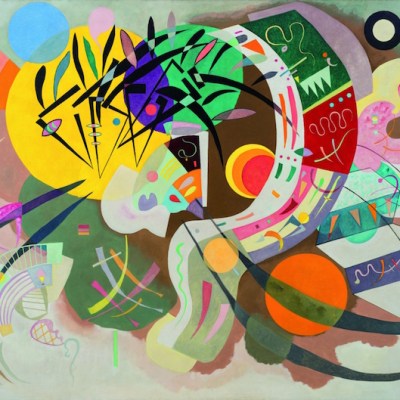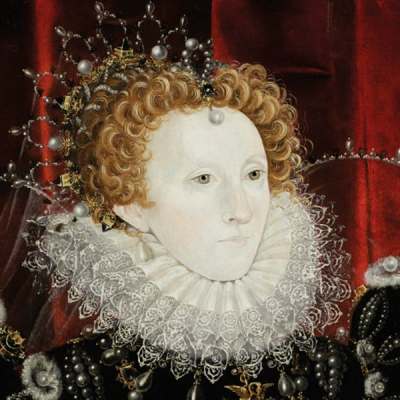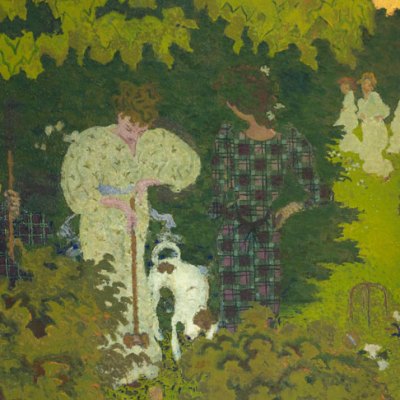Realising the Guggenheim’s exhibition ‘Mystical Symbolism: The Salon de la Rose+Croix in Paris, 1892–1897’ has long been a dream of mine. The Salon de la Rose+Croix (R+C) was an annual exhibition established in Paris by the eccentric French author and critic Joséphin Péladan to represent the doctrines of his Rosicrucian order – a fraternal, esoteric religious sect. The Salon was held from 1892 to 1897 at various gallery spaces around the city and convened Symbolist artists from Europe and the US. Péladan preferred an enigmatic and numinous strain of Symbolism, a literary and artistic movement that was widespread by the 1890s. Symbolism rejected the secularism, scientific theories, and realist aesthetics that had dominated much of the 19th century in favour of the spiritual, imaginary, and stylised.
Participating artists varied in ideologies and, to some extent, styles, but primarily employed a version of Symbolism visually characterised by sinuous lines, elongated bodies, and flattened forms. Their subject matter was allegorical, literary, mythical, or religious, and replete with arcane symbols, ethereal women, androgynous beings, and monstrous creatures. They gravitated to themes such as the Greek mythological poet Orpheus, the art and precepts of the so-called Italian Primitives, New Testament narratives, and female stereotypes – from the threatening femme fatale to the untainted femme fragile. Cults of personality formed around certain individuals, from Péladan himself to the German composer Richard Wagner, whose concept of gesamtkunstwerk inspired interdisciplinary activities at the Salon, including musical performances, theatrical productions, and lectures.
The Death of Orpheus (1893), Jean Delville. Royal Museums of Fine Arts, Belgium. Photo: Royal Museums of Fine Arts, Belgium/J. Geleyns-Ro scan; © 2017 Artists Rights Society (ARS), New York/SABAM, Brussels

The seeds of this exhibition date to my MA thesis on Gustave Moreau. I came across references to the Salons only because Moreau refused to participate in them; the few details mentioned in the Moreau literature piqued my interest. At the time, little scholarship existed on the R+C. Robert Pincus-Witten’s dissertation, published in 1976, was one of the only sources. Since then, Symbolism has become a focus of my research and, still curious about these exhibitions celebrating transcendence, I returned to the Salon 10 years ago. I discovered that little had been done since Pincus-Witten, perhaps because the Salon does not fit comfortably in the traditional narrative of modernism. An exception was Jean-David Jumeau-Lafond’s important scholarship, which was included in publications on Symbolism and the peintres de l’âme. Aside from Jumeau-Lafond, research has tended to concentrate on the seductive figure of Péladan, rather than on the artists who exhibited at the Salons.
This June my dream came to fruition, but it was not without its challenges. Art-historical forensics, as I call this research, were required to overcome hurdles in identifying works actually exhibited at the Salon (the Guggenheim show is strict in this sense). Catalogues exist for the six iterations, but only the first two contain rudimentary line drawings of the works ostensibly included in the shows. Titles of works in the catalogues can be of little use, tending towards the generic. There are many Symbolist works exhibited called Vision or The Annunciation. Occasionally I got lucky: the catalogue raisonné was key in pinning down which Fernand Khnopffs I needed, and a recent monograph guided me with Armand Point. In other instances, special trips were required to consult object files and view works in storage at museums mainly scattered across France. I became quite familiar with the SNCF rail system, travelling to many cities – from Brest to see a Henri Martin, to Nîmes for Jean Delville’s portrait of Péladan – and points between and beyond!
Portrait of the Grand Master of the Rosicrucians in Choir Dress, Joséphin Péladan 1895, Jean Delville. Photo: Florent Gardin/ Musée des Beaux-Arts, Nîmes; © 2017 Artists Rights Society (ARS), New York/SABAM, Brussels

Moreover, the R+C catalogues are inaccurate (and peppered with typos). Works cited in the catalogues were not always physically in the exhibitions. More dramatically, the paintings by Louis Welden Hawkins were stopped at the French border in 1894 and arrived in Paris too late. On the flipside, art shown in the Salons was not always listed in the catalogues. Consequently, contemporary reviews were essential. Fortunately, the Salon de la R+C, while little known today, attracted much press in the 1890s. A tantalising – unsolved – mystery was a reference to ‘Sartorio’ in an 1893 review. This had to be Giulio Aristide Sartorio, the Italian Symbolist, but his name was nowhere in the R+C catalogues. Yet I knew he had been in Paris then. I desperately wanted to track the works down because the Salons were international in scope – a feature of my own exhibition. Despite scouring Sartorio scholarship and Italian art journals of the era for references to the R+C show, I hit a dead end.
Young Saint (1891), Henri Martin. © Musée des Beaux-Arts, Brest

Sometimes the catalogues were even less informative, as with the woodcuts of the radical Nabi, Félix Vallotton. A tormenting reference to ‘seven prints framed together’ (with no titles) left me with little to go on. Publications on the prints do not include exhibition histories. Here, too, I turned to reviews, which often described the more accomplished, mystical, or shocking works on view. Vallotton fell into the first and last categories. The critic Félix Fénéon named two landscapes and a portrait. Nonetheless, I had hoped for at least two satirical images (of this type only The Burial was listed in the 1892 catalogue) and hunted further. Fortunately, so to speak, a Vallotton print angered one reviewer enough to write about it with scathing accuracy and his description corresponded to a single work executed by 1892, The Paris Crowd.
The Annunciation or Ancilla Domini (1895), Armand Point. Private collection. Photo: courtesy Sotheby’s

Piece by piece, a checklist of around 40 artworks – primarily from museums – came together. Happily, I was able to achieve my initial goal of examining the diverse artists at the Salon and their work. Symbolism appears in its many guises by artists both in synch and at odds with Péladan’s Rosicrucian tenets at the Salon de la R+C. Hopefully, these distinctions and Symbolism’s heterogeneous character come through in the Guggenheim’s exhibition.
‘Mystical Symbolism: The Salon de la Rose+Croix in Paris, 1892–1897’ is at the Solomon R. Guggenheim Museum, New York, from 30 June–4 October.
From the July/August 2017 issue of Apollo. Preview and subscribe here.


